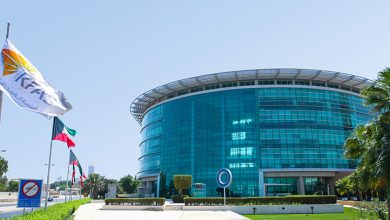Expanding the boundaries of the use of sustainable building materials

As climate change concerns increase, work is underway to find ways to reduce the amount of energy consumed by buildings. This challenge is all the more important as a priority given Kuwait's rapid economic growth, which is leading to the expectation of increasing both carbon emissions and energy consumption in the construction sector. But given that this sector is already responsible for one-third of total final global energy consumption, can the need for construction be balanced against protecting our environment?
One potential solution is to increase the use of natural fibres within building materials, but the challenge is how this can be achieved without compromising the mechanical properties needed to construct durable buildings.
Fortunately, Ms. Zainab Al-Hajjaj and Mr. Mohammed Yassin are working to find a solution to these challenges. Their research represents a collaboration between the departments of civil and mechanical engineering at the Australian College of Kuwait. Funded and supported by the Kuwait Foundation for the Advancement of Sciences (KFAS) and the Australian College of Kuwait, their research opens up new horizons when it comes to the use of natural agricultural waste in building construction.
"Natural fibers generally have significant advantages when it comes to replacing man-made materials.
They are available, environmentally friendly and cost-effective."
Their research focuses on the use of palm and flax fibers. "In our region, we have a lot of palm fronds available every season, and our goal is to introduce this into concrete as an environmentally friendly material," Yassin said. Another natural material that the research is looking at is flax fiber, a good heat insulator that may play an important role in the energy efficiency of buildings.
A large amount of research is required on these substances before they can be put on the market. One of the main challenges surrounding the project, Yassin said, is "making sure all technical aspects are covered and proving that this new material is fit before we present it to the construction sector".
The researchers need to perform multiple tests with different percentages of fiber. "When natural fibres enter concrete, they generally reduce their compressive strength but increase their tensile strength," Yassin says. They intend to offer a range of materials to suit specific applications.
Al-Hajjaj says their ultimate goal is to disseminate their findings in the beloved country of Kuwait, helping to reduce energy consumption in buildings in an effort to reduce the impact of climate change.
By Emma Stenhouse




